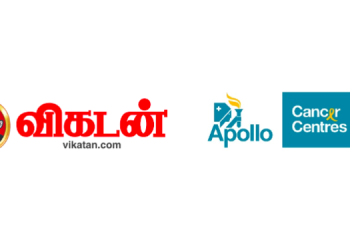The Hindu Group (THG) Publishing’s English dailies The Hindu and businessline have donned a new look. The redesigning was done by Mario Garcia, the Cuban-American newspaper designer and editorial consultant who has worked for publications such as The Wall Street Journal, The Washington Post and New Straits Times. This isn’t the first time the ‘Mahavishnu of Mount Road’ has turned to Garcia to create its look.
In a brief conversation with Medianews4u, the group’s CEO LV Navaneeth spoke about the makeover, design ethos and revamping of digital assets.
The Hindu and businessline have recently donned a ‘Cleaner-Sharper-Bolder’ look. Why was a need felt for the new look? Was there any research to trigger it?
For every newspaper, while their core journalistic values remain intact, the spectrum of areas covered are evolving. Similarly, design also needs to speak to the people it’s catering to, both from engaging with the existing audience and to attract new audiences. Once in four or five years is a good time to look at what’s changing around us in terms of design philosophy and layout and change it.
We wanted to do this a little bit earlier, but we didn’t do it during the Covid-19 period. In our view, any design has a shelf life of around four to five years; sometimes it’s more and sometimes it’s less. It’s always good to look at reasonably large changes in design. Having said that, there are small changes that happen every now and then, which are not visible.
There is research going on in this regard – you are talking to your readers, getting their feedback. Based on whatever the ongoing conversation is with the readers, you take those into account, treat them as inputs while working on the new design.
A new design was created by Garcia in 2005. There were some changes to it before The Hindu returned to that look. Now Garcia himself has worked on the new look in 2022. How important is it to stay consistent with the design ethos and the same designer?
What is most important is to stay consistent to what your journalistic ethos are – that is constant. In terms of design, once you have a design, it’s imperative to stay consistent to it and depending on the reading requirements of the audience, you make changes accordingly. If you look at The Hindu 15 years ago and now, it might look radically different, but at each point of time, it’s by and large consistent.
Design for each of the titles might be different. For instance, the businessline design change is a bit more dramatic. The Hindu has some upgraded elements in the design, but it is based on some of the elements of the existing design. Technically what any design tries to achieve is that it tries to attract new readers and make the reading experience more convenient to existing readers.
Definitions of new and existing could differ at different points of time. For example, in 2005 existing readers were your traditional readers, who have been reading you for a very long time. Newer readers at that point of time were either the ones who were reading somebody else, or readers who were getting into English reading habits for the first time, or a younger audience that was getting into the newspaper reading experience for the first time.
Between 2005 and 2022, the answers to these questions have changed. The definition of existing readers hasn’t changed, but what you mean by newer readers has significantly changed. Now, you are not only saying how do I get newspaper readers who are not my readers to read me, but also how do you get purely digital readers to come back to newspapers.
The questions remain the same during every redesign and the new design is an outcome of what the answers to these questions are.
How far will the new design help in attracting and retaining digital readers?
There are two components to this redesign exercise. One is what is happening with our physical assets. We are also redesigning our websites and apps. What digital solves for existing readers is ease of discoverability, lack of clutter etc. With the printed products, as mentioned above it is to appeal to newer audiences and to enhance reading experiences for existing readers. You will see various parts the elements have played, the font size is increased for a particular reason, use of pictures, headlines, gutter space. The print design borrows lots of elements that work very well for websites and apps.
One feedback we have been getting for the new design which is two days old now is that the physical products give the feel of digital products. That is one of the elements we wanted as the outcome of the redesign exercise. It should look more browsable, to provide more website and app-like experience on a printed newspaper while protecting the convenience and comfort for the newspaper-only readers.
Do you see a revamp of the web product too? When will that kick in?
The Hindu and businessline website and app changes will kick in very soon. businessline probably before the end of this month and The Hindu probably by the end of next month. Hopefully, by December 2022, Sportstar and Frontline (both print and digital assets) will get redesigned.
How does the e-paper consumption compare with that of the website? How do you see e-paper shares going forward? What is the current share of subscription (even as a percentage) of print vs online vs epaper?
We have some insights on the same, as all our digital assets are behind the paywall. The subscription offerings are also different. The traction for e-paper is very high, a lot of our subscribers subscribe to the e-paper either in addition to web and a significant set of people subscribe to e-paper only.
Why is the e-paper sought after? The e-paper user in terms of age and gender is no different from a website app subscriber. Typically there is a notion that older people are used to print editions and those who don’t have access to the print version in some markets prefer the e-paper. Data doesn’t tell us that; my hypothesis is while the internet has unlimited choices it has also given enormous noise in our lives. A section of people seem to be saying that there is too much out there and I trust the editor of a newspaper to put together a product that I can consume from start to finish in a finite period of time, which is why I believe e-paper does well.
Forty percent of all our web subscribers subscribe to the e-paper. The rate of growth of digital subscriptions is far higher than the rate of growth of print.

















